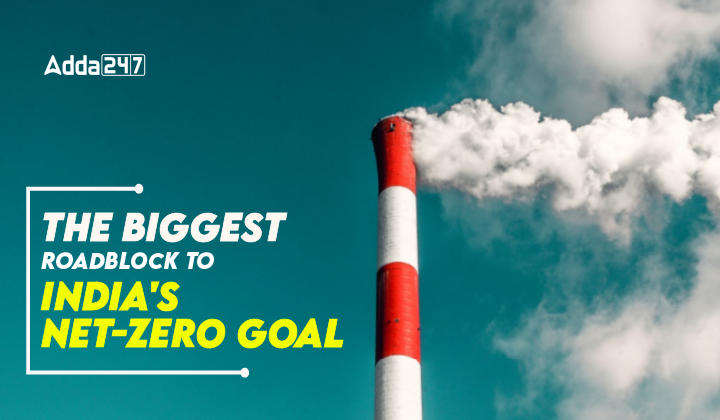Table of Contents
India’s Net-Zero Goal- India’s ambitious stride towards a net-zero future is hindered by a significant challenge. The availability and processing of critical minerals necessary for decarbonization technologies. Despite the Indian government’s proactive steps in identifying and auctioning critical mineral blocks, the intricate web of global mineral supply, dominated by a few countries, and the monopolization of processing capacities pose formidable obstacles.
Critical Mineral Strategy
- Government Initiatives: In a strategic move, the Indian government identified 30 critical minerals in July 2023, essential for various sectors including decarbonization, electronics, and defense. Subsequent amendments in mining laws in November 2023 opened doors for private sector participation, signaling a significant shift towards tapping into these vital resources.
- Critical vs. Rare Earth: It’s crucial to distinguish between critical minerals and rare earths, as their applications and global dynamics vary widely. India’s list of 30 critical minerals reflects a tailored approach, considering factors like import reliance and recycling rates.
China’s Dominance and the Global Response
China’s stronghold on the processing and manufacturing of critical minerals and related technologies raises significant geopolitical and supply chain concerns. Its strategic investments across the globe further cement its position.
Minerals Security Partnership (MSP): In response, the US-led MSP, which India is a part of, aims to secure critical mineral supply chains among allied nations. However, the exclusion of mineral-rich countries like Chile and the DRC raises questions about the partnership’s efficacy.
Decarbonizing Industries
The industrial sector, contributing to approximately 28% of India’s total greenhouse gas (GHG) emissions, encompasses a wide range of activities from metal production to manufacturing and construction. The reliance of these industries on fossil fuel-generated electricity underscores the urgent need for sustainable alternatives.
Transitioning to green energy technologies, such as solar panels, wind farms, and electric vehicles, demands an exponential increase in mineral inputs. The International Energy Agency (IEA) projects a fourfold rise in mineral demand by 2040 to meet climate goals.
The world’s supply of key minerals like lithium, cobalt, and rare earths is tightly controlled by a handful of countries, with China playing a pivotal role not only in reserves but also in processing capacities.
India’s Net-Zero Ambition- Strategic Priorities for the Government
As India sets its sights on achieving net-zero emissions by 2070, the actions taken in the upcoming five years are pivotal for laying a strong foundation for this ambitious goal. Despite not being the largest contributor to global carbon emissions, India’s carbon footprint is on an upward trajectory due to its developmental aspirations, with its emissions expected to peak around 2040-45. The sectors primarily responsible for India’s carbon emissions include energy, industry, and transportation, all of which are integral to the nation’s economic growth.
Aligning with Global Efforts
India submitted its long-term low-carbon development strategy to the United Nations Framework Convention on Climate Change (UNFCCC) in November 2021. This strategy, built on principles of equity and climate justice, outlines a roadmap for achieving net zero while ensuring sustainable development.
Seven Key Transitions for a Greener Future
The strategy focuses on seven key transitions, encompassing various sectors:
- Low-carbon electricity systems: Transforming the power sector to support development.
- Efficient and inclusive transport systems: Building sustainable and accessible transportation infrastructure.
- Sustainable urbanization: Promoting climate-friendly urban design and development.
- Decoupling economic growth from emissions: Fostering innovation for a low-emission industrial sector.
- Carbon dioxide removal solutions: Exploring technologies to capture and remove carbon emissions.
- Enhanced forest cover: Increasing Forest and tree cover while considering social and ecological factors.
- Financing low-carbon development: Mobilizing resources to support the transition.
Taking Action on Climate Change
India’s commitment extends beyond plans. The government has implemented various initiatives to address environmental concerns:
- National Clean Air Programme (NCAP): Aiming to improve air quality in major cities.
- BS-VI fuels standards: Implementing stricter emission norms for vehicles.
- Sustainable Alternative Towards Affordable Transportation (SATAT): Promoting the use of Compressed Bio-Gas (CBG) as a clean fuel.
- Namami Gange and National River Conservation Plan: Supporting River conservation efforts.
- Ban on single-use plastics: Addressing plastic pollution.
- Afforestation schemes: Increasing tree cover through various programs.
Conclusion
The journey towards decarbonization and achieving a net-zero future is fraught with challenges, not least of which is the critical mineral bottleneck. As India navigates this complex landscape, a multifaceted approach involving strategic international collaborations, bolstering domestic capabilities, and fostering innovation in mineral processing and recycling will be paramount. Overcoming the critical mineral roadblock is not just about securing resources; it’s about ensuring the sustainability and resilience of India’s green energy future.



 TSPSC Group 1 Question Paper 2024, Downl...
TSPSC Group 1 Question Paper 2024, Downl...
 TSPSC Group 1 Answer key 2024 Out, Downl...
TSPSC Group 1 Answer key 2024 Out, Downl...
 UPSC Prelims 2024 Question Paper, Downlo...
UPSC Prelims 2024 Question Paper, Downlo...




